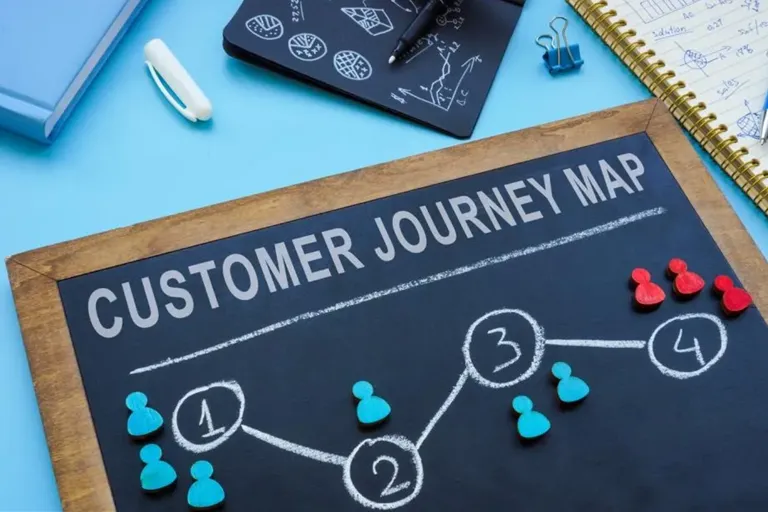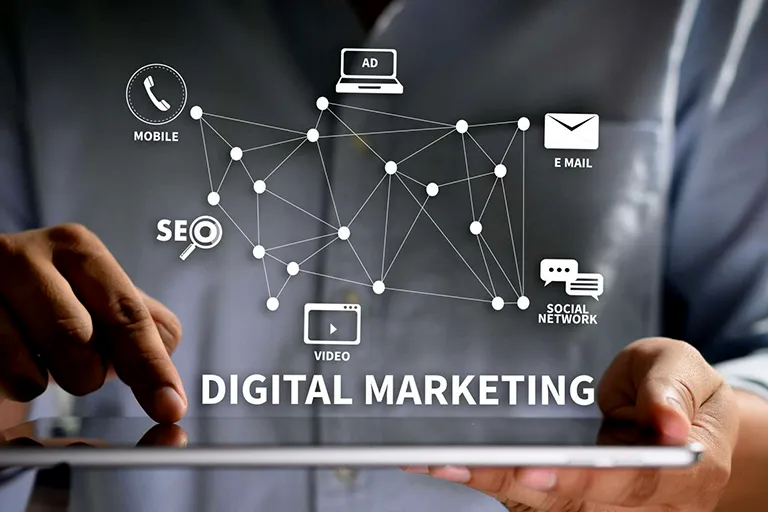The design of the audience persona is based on a type of goal setting that we can talk about the customer, buyer and audience in a concrete way and imagine him exactly like a familiar person or a friend, colleague or neighbor in our mind and work for him. and meet his needs and offer him what we have.
Persona is a term that has become very popular in the last decade. Today, this term is used in various fields such as marketing , digital marketing and content marketing , customer relationship management , content production , business model and even product development , and in all of them, it has a more or less similar meaning.
The terms Audience Persona, Customer Persona, Buyer Persona, and Consumer Persona are among the combinations created and used with the word Persona.
Definition of persona
A persona is a hypothetical and clear image of a person and sometimes a business that can be our ideal customer or audience or buyer, and we think that this image is true for a significant number of our customers, audience or buyers.
In other words, persona refers to a set of characteristics, preferences, possessions, desires, and thought and behavioral patterns of a hypothetical audience or customer.
Business owners and marketers tend to produce their own content based on their own way of thinking. Be careful not to fall into this trap and always repeat to yourself that I am not the audience of my content.
The assumption that the audience, the buyer and the customer, probably thinks like me, and has the same needs and concerns as me, can be very destructive and damaging.
If we accept the assumption that understanding the view and attitude and mental model of the audience and customer is not necessarily the same as our view and attitude to the surrounding world, we can say that the clearer the image of the other party is in our mind, the more we can understand the content, product, Adapt our processes and business model to his needs and desires and provide his satisfaction better.
Of course, paying attention to the wishes, expectations and attitude of the other party is not a new thing and has been taken into account in marketing in different ways. For example, when we talk about market segmentation or target market selection, it is clearly meant to see the needs and attitudes and concerns of a group of customers or audiences and adapt the direction of our activities and plans to them.
But tools and terms such as target market and customer segmentation are a bit abstract, and the more we can draw a clearer and more realistic picture of the other party in our mind, the more and better our understanding of him will be.
Before we go into more details, pay attention to the following three points:
Depending on the type of activity and your needs, the appropriate and useful description of the persona will change. For example, a person’s profile may be useful for us to develop a content strategy . But maybe another persona is more useful for a business that produces homemade cakes and pastries.
The value of a persona is the number of its instances. A person’s persona is valuable when we believe that a significant number of our audience or customers belong to that person and their tastes, needs and concerns are close to it. If among ten thousand contacts or customers, only one or two or ten people are similar to the person we are looking for, the definition and design of this persona will have no value.
A persona is not meant to be an accurate description of a large portion of our customers. When we talk about a persona, not a lot of our audience or customers are going to have their exact characteristics. Rather, it is important that their behavior, taste, and decision-making style are similar to him. For example, you should be able to say that if I design and deliver a product that satisfies Ali, I know at least 10% of my customers or audience will be satisfied.
The reason for persona design
Determining a persona can help to form a common language in the workplace.
Suppose you were able to design and define five personas that, in your opinion, cover 90% of your audience or customers. For example, Ali, Maryam, Hamid, Sarah, and Azadeh are our five defined personas.
Now the meaning of such a sentence is clear for all colleagues when we say that Azadeh and Maryam buy this new product. But you should not hope that Hamid, Ali and Sara will buy it.
It will be easier to argue about such a sentence than general conversations about the features of the product. But the only reason for designing a persona is not to create a common language.
This form of visualizing the audience and the customer brings us closer to their world and can help us in ideation , product design and content marketing .
Clear depiction of the audience and the customer using personas brings us closer to their world; And it helps that his wishes and expectations are always in front of our eyes.
When you want to produce a video for Instagram, imagining Maryam or Hamid or Ali or Omid sitting in front of you with the persona you have defined will be much more effective than a single and abstract depiction of a number of people with a vague and gray image with general descriptions.
The stages of designing and determining the persona
Obviously, the descriptions you use for a persona will depend heavily on your product, content, and type of activity. Therefore, no one can decide the design form and definition of the persona as well as you.
But usually a number of key issues and questions are listed to define a persona. You can use these types of lists to get an initial idea.
Probably, the answers to some of these types of questions can help define the persona you are looking for, and you should discard some others.
It may also mean other descriptions and descriptions about your work that are not mentioned in public listings.
In the following, we review a number of topics:
1- Demographic factors
One of the first topics that can be considered for defining a persona is the demographic characteristics of the persona. The following are examples of these features:
- Age category
- gender
- Income level
- Type and level of formal university education
- Geographical location and place of residence, such as which area of the city? Which part of the country?
2- Position and job information
In some businesses and products, the job position and job-related information form an important part of the audience or customer persona.
The following are examples of job position factors:
- Is he working?
- Does he work in a public or private group? Profit or non-profit?
- Is he an employee or an entrepreneur?
- How many years of work experience?
- In which job category is it? Is it an expert or a middle manager or a senior manager? Does he have an operational activity or a staff job?
- What skills has he acquired through his job? What skills does he need to succeed in his job?
- How does he feel about his current career path? Is it looking to improve on the current path? Or is he looking for a new path?
3- Values and identity
- How does he describe himself in one sentence?
- What are his values in work and life?
- What motivates him?
- What is he proud of in his personal or professional life?
- Is it possible to write an individual SWOT matrix for him and specify what his strengths and weaknesses are and what opportunities and threats he sees and perceives in the environment?
4- Goals and patterns
- What person or people is influenced by our desired persona? Who are examples of influencers for him?
- Who do you consider the giants and elders of your path? Those who find themselves in their path?
- What does he want from his life?
- What is the dream place he imagines for himself in the society in terms of career, social, etc.?
5- Challenges
As a rule, every person faces all kinds of problems and challenges. But here it means the problems or challenges that the customer, buyer or audience has come to you hoping to solve.
Sometimes in describing this challenge, they use the term Pain-point, which is actually a pain that the customer has experienced and believes that you can cure.
- Is there a problem or challenge that your audience or client is keeping up at night or waking up in the morning worrying about?
6- Lifestyle
- What fears and concerns does the persona you are considering have that are related to your field of work and activity?
- How does a typical day go?
- What is the first priority in his life? Work? Family? His personal life?
- What information do you have or guess about his lifestyle?
- Do you have an estimate of his expenses?
- What are his social activities?
- What are his hobbies and how do he spend his free time?
7- sources of information
- What methods and channels does your desired persona get its information from?
- What media does he follow? What sites do you visit? What blogs does he read?
- Which media do you consider authentic and which media are not authentic?
- What kind of books and magazines do you like?
8- Digital presence
- What is his level of access to the Internet? What tools and methods does he use to access the Internet? What are the limits on the speed and volume of internet traffic?
- How familiar is he with technology and at what level is his digital literacy?
- Does the persona you want have a website or a blog?
- Which messengers and social platforms does he use?
- How active is he in the social network ? In which social networks is he a member and does he have an account?
- Does he have an email? How often does he check his email?
- Does he prefer to make his purchases online or does he prefer physical spaces?
- If he has shopping experience online, how much is he willing to buy online? Is there a level above which he prefers to spend with physical presence?
9- Content preferences
If defining your persona is aimed at formulating content strategy and implementing content marketing plans , questions like the following can be very useful:
- Which channels does it prefer to access your content?
- What is his preferred content format? Prefer text or audio file? Photo or video?
- Looking for news content? Or does he prefer entertaining content?
- Do you prefer one-way content or interactive content?
- Which format of the types of content formats can you provide him in the long term, continuously and frequently? Which format does it accept?
- Which of the content types will not be checked until forced?
10- The audience’s relationship with you and your product
- What is his purpose for buying your product or consuming your content?
- What is the depth of his relationship with you? What is the life of the relationship, the frequency of the relationship, investment in the relationship and the amount of interaction with you?
- What is your criticism of your product or do you think it is?
- What product did he use before your product?
- What content did they go to before your content?
- Before your brand, what brand did he go to and which brand’s products and content did he consume?
- Why did he prefer you to other competitors?
In the end, we will be happy if you choose one of the personas you have in mind for a business or an organization and try to describe his persona based on your guess and share it with us.














